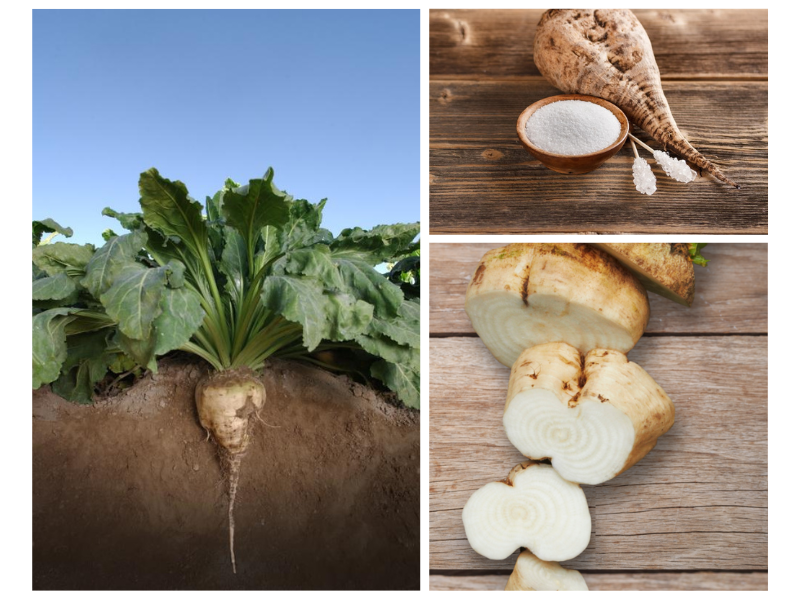The Ultimate Contrast: Beet Sugar vs. Cane Sugar Explained
The comparison between beet sugar and cane sugar provides a fascinating exploration of 2 predominant sweeteners in the cooking world. While both sugars share an usual composition of sucrose, their origins, refining techniques, and flavor profiles split dramatically.
Beginnings of Sugar Resources
The origins of sugar resources are mainly rooted in 2 unique plants: the sugar beet and the sugar cane. Sugar cane, an exotic turf belonging to Southeast Asia, has been grown for over 2,500 years. Historically, it was initial trained in New Guinea and later on spread to India, where it ended up being an indispensable component of the culture and economic situation. The procedure of drawing out sugar from cane became reputable, causing its prestige in profession during the Center Ages.
On the other hand, sugar beet is a relatively contemporary source, established in Europe throughout the late 18th century as a response to sugar cane shortages. The plant grows in temperate climates, making it suitable for growing in areas such as France and Germany. The effective removal of sugar from beetss marked a substantial farming innovation, as it supplied a different to cane sugar, especially during durations of profession interruption.
Both plants have actually played vital duties fit the global sugar market. Their distinct growth environments and historical contexts illustrate the diversity of sugar resources, inevitably affecting local agricultural practices and economic advancement.
Processing Methods Discussed
Different handling techniques are utilized to remove sugar from both sugar beet and sugar cane, each customized to the specific attributes of the source material. In the situation of sugar beetss, the procedure begins by collecting the origin and then washing it to remove soil and contaminations.
Conversely, sugar cane processing includes a various technique. The cleared up juice is focused via evaporation, similar to beet sugar processing, before formation takes place. Both processes culminate in the manufacturing of raw sugar, which might go through further refining to attain the wanted purity and quality.
Nutritional Differences

When comparing beet sugar and cane sugar, noteworthy nutritional differences arise, though they are frequently refined. Both sorts of sugar are mostly made up of sucrose, offering approximately the very same caloric web content-- about 4 calories per gram. The distinctions lie in their trace mineral content and the presence of certain compounds that may have marginal dietary ramifications.
Beet sugar contains little quantities of calcium, potassium, and iron, while cane sugar generally supplies somewhat greater concentrations of these minerals. Additionally, cane sugar might preserve more all-natural molasses throughout processing, which can contribute to map quantities of antioxidants and other valuable substances. This is especially real for much less polished selections, such as raw cane sugar.
Regardless of these distinctions, both beet and cane sugars are mainly composed of simple carbohydrates, with a high glycemic index, resulting in comparable results on blood sugar level degrees. Therefore, while there are minor nutritional differences, the total health influence of eating either type in small amounts continues to be mostly equal. beet sugar vs cane sugar. Individuals seeking to decrease sugar intake for health and wellness factors should consider both kinds with equivalent examination, concentrating on general nutritional patterns instead of the source of sugar
Taste Accounts Compared
Preference accounts of beet sugar and cane sugar show distinct features that can affect their cooking applications. Cane sugar, often viewed as having an extra complicated, nuanced sweetness, is derived from the high lawn of the sugar cane plant.
In contrast, beet sugar, removed from sugar beetss, is recognized for its cleaner, more simple sweetness. This top quality makes it particularly ideal for recipes calling for a neutral sweetening agent that enables various other flavors to shine. Some culinary experts suggest that beet sugar might leave a somewhat earthy aftertaste, which can be unwanted in fragile desserts.
Additionally, the understanding of sweet taste intensity ranges both, with some tasters identifying cane sugar as sweeter compared to beet sugar at equal measurements. Eventually, the choice in between beet and cane sugar may rely on the particular application, with each sugar offering unique qualities that can enhance or complement numerous recipes. Comprehending these distinctions permits for educated decisions in culinary methods.

Environmental Influence
The environmental impact of sugar manufacturing-- whether from beet or cane-- has gathered enhancing attention recently because of its implications for sustainability and ecological health. Both sugar resources exhibit unique environmental impacts, influenced by agricultural techniques, land usage, and resource usage.
Cane sugar production frequently necessitates Look At This big areas of exotic land, which can lead to deforestation and loss of biodiversity. In addition, the farming of sugarcane is frequently connected with high water usage and significant chemical and fertilizer application, adding redirected here to dirt deterioration and water pollution.
On the other hand, beet sugar is primarily expanded in temperate regions, normally requiring much less water and land. Nonetheless, its growing can still include the use of chemical inputs, influencing regional ecosystems. The energy-intensive handling of beet sugar can contribute to greenhouse gas discharges.
Lasting farming methods and developments in technology are necessary for minimizing the ecological influences of sugar manufacturing. Organic farming techniques, incorporated bug monitoring, and efficient water usage can boost the sustainability of both beet and cane sugar sectors, inevitably causing a decreased environmental footprint and a much healthier planet.
Verdict
In recap, the comparison in between beet sugar and cane sugar highlights both resemblances and differences that influence their application. While both types of sugar share a main structure of sucrose, their taste accounts, processing methods, and environmental impacts vary dramatically. Cane sugar is defined by its complex sweetness, while beet sugar provides a more simple taste. Eventually, the option in between these two sugars need to be assisted by specific cooking requirements and environmental factors to consider, enabling for notified decision-making.
The origins of sugar sources are mainly rooted in two distinct plants: the sugar beet and the sugar cane.Different handling methods are used to extract sugar from both sugar beet and sugar cane, each tailored to the details features of the resource material.Beet sugar includes small amounts of iron, potassium, and calcium, while cane sugar commonly offers go to this web-site slightly higher focus of these minerals.Regardless of these distinctions, both beet and cane sugars are predominantly composed of easy carbs, with a high glycemic index, leading to comparable effects on blood sugar degrees. Cane sugar, commonly regarded as having an extra complex, nuanced sweetness, is acquired from the tall yard of the sugar cane plant.